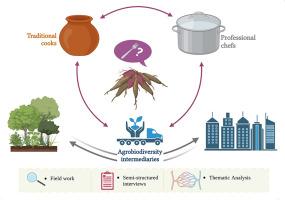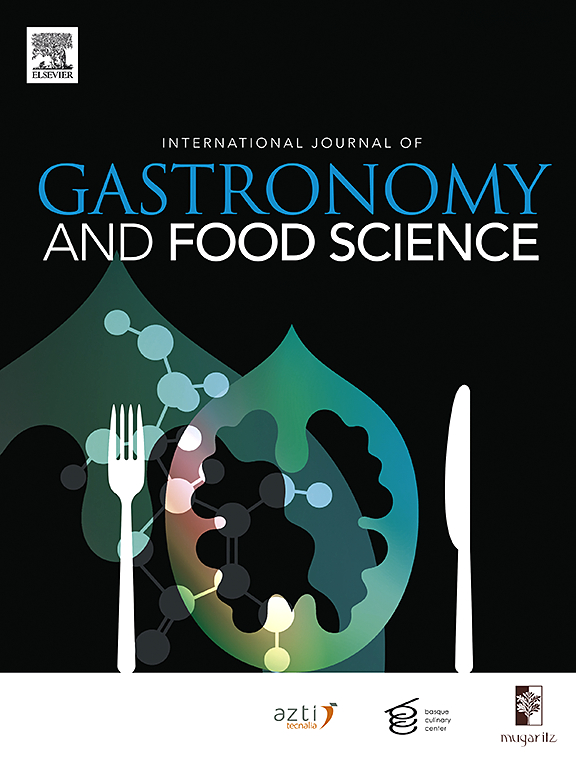Culinary perspectives on Colombian purple ñampín: from tradition to innovation
IF 3.6
2区 农林科学
Q2 FOOD SCIENCE & TECHNOLOGY
International Journal of Gastronomy and Food Science
Pub Date : 2025-09-17
DOI:10.1016/j.ijgfs.2025.101304
引用次数: 0
Abstract
Neglected native roots and tubers offer transformative potential for food systems through biodiversity-based innovation. In Colombia, Dioscorea trifida (“ñampín”), a purple yam with symbolic, nutritional, and gastronomic value, remains underutilized. This study examines its potential by integrating cultural, culinary, and socioeconomic perspectives drawn from interviews with chefs, traditional cooks, and agrobiodiversity advocates. Findings underscore its sensory appeal and role in identity and food traditions, while revealing how fragmented supply chains and limited visibility constrain its reach. Actor-driven strategies and institutional support are identified as key to expanding its use and recognition. Overall, ñampín can bridge local knowledge and contemporary innovation, contributing to more diverse, resilient, inclusive, and culturally grounded food systems.

从烹饪角度看哥伦比亚紫ñampín:从传统到创新
被忽视的本地块根和块茎通过基于生物多样性的创新为粮食系统提供了变革潜力。在哥伦比亚,具有象征意义、营养和烹饪价值的紫色山药Dioscorea trifida(“ñampín”)仍未得到充分利用。本研究通过整合从对厨师、传统厨师和农业生物多样性倡导者的采访中得出的文化、烹饪和社会经济观点,考察了其潜力。研究结果强调了它的感官吸引力以及在身份和食物传统中的作用,同时揭示了供应链的碎片化和有限的知名度如何限制了它的影响力。行动者驱动的战略和机构支持被确定为扩大其使用和认可的关键。总体而言,ñampín可以将当地知识与当代创新相结合,有助于建立更多样化、更有弹性、更包容、更有文化根基的粮食系统。
本文章由计算机程序翻译,如有差异,请以英文原文为准。
求助全文
约1分钟内获得全文
求助全文
来源期刊

International Journal of Gastronomy and Food Science
Social Sciences-Cultural Studies
CiteScore
5.30
自引率
10.50%
发文量
170
审稿时长
45 days
期刊介绍:
International Journal of Gastronomy and Food Science is a peer-reviewed journal that explicitly focuses on the interface of food science and gastronomy. Articles focusing only on food science will not be considered. This journal equally encourages both scientists and chefs to publish original scientific papers, review articles and original culinary works. We seek articles with clear evidence of this interaction. From a scientific perspective, this publication aims to become the home for research from the whole community of food science and gastronomy.
IJGFS explores all aspects related to the growing field of the interaction of gastronomy and food science, in areas such as food chemistry, food technology and culinary techniques, food microbiology, genetics, sensory science, neuroscience, psychology, culinary concepts, culinary trends, and gastronomic experience (all the elements that contribute to the appreciation and enjoyment of the meal. Also relevant is research on science-based educational programs in gastronomy, anthropology, gastronomic history and food sociology. All these areas of knowledge are crucial to gastronomy, as they contribute to a better understanding of this broad term and its practical implications for science and society.
 求助内容:
求助内容: 应助结果提醒方式:
应助结果提醒方式:


